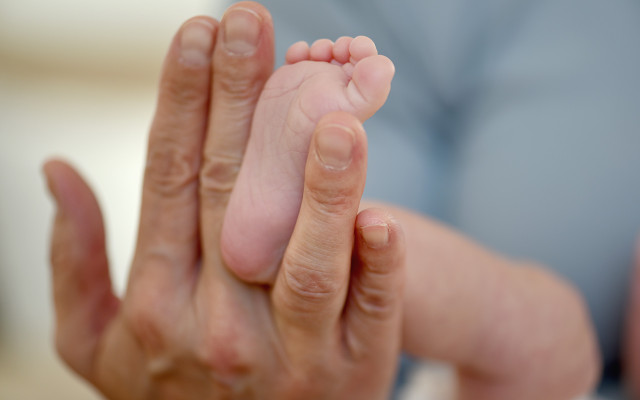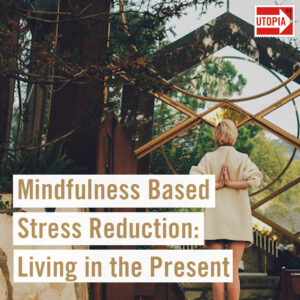Mindfulness is more than just a buzzword: it is an ancient notion that can still be used today to help you reduce stress, increase your focus, and be more in control of your emotions. We’ll tell you what’s behind the concept, how mindfulness exercises can increase your quality of life, and show you how to integrate mindfulness based stress reduction (MBSR) into your everyday routine.
Mindfulness based stress reduction has the potential to help almost everyone reduce stress in their daily lives. As we scramble to maintain our busy schedules, we are constantly sprinting from one situation to the next. We think about what we’ve got to do at work while we’re eating breakfast, and as we’re leaving the office we’re already thinking about everything we’ve got to take care of before the day is over.
If we’re being honest with ourselves, we very rarely take the time to empty our minds and just be present in the current moment, and that neglect comes at a price. Our hectic running about all day can be incredibly stressful, and that stress has a negative impact on our health. In extreme cases, too much stress can lead to burnout, depression, anxiety or panic attacks. Mindfulness exercises offer a way to reduce the stress built up from the daily grind and help you live a more balanced, relaxed, and healthy life.
Read more: How to Reduce Stress: 7 Ways to “Decelerate” Your Life
What is Mindfulness?
Mindfulness is a form of meditation which has its roots in Buddhism. Mindfulness means to consciously experience this very moment; to observe your own thoughts and feelings without getting involved in them or attaching value judgments. Mindfulness exercises help you focus and control your attention, and give your mind the opportunity to rest.
Mindfulness Exercises: Mindfulness Based Stress Reduction (MBSR)
In the western world, the molecular biologist Jon Kabat-Zinn is known as a pioneer of mindfulness practices. In the 1970’s, he developed techniques for mindfulness based stress reduction (MBSR) designed to make the concept more accessible.

MBSR is an eight week mindfulness training program in which you learn to pay attention to your senses, to notice the state of your body, and finally, and this is the hardest part, to observe your emotions. The trick is to pay attention but not to get involved; not to attach value judgements to anything that goes through your mind. This allows you put space between your raw emotions and your reaction to those emotions.
You can imagine it like this: You are nervous before taking an important exam. If you get outside of your nervousness and experience it from a distance, you are no longer caught up in the actual feeling of nervousness. In this way, you can escape the infinite regress that is being nervous about being nervous about being nervous. With practice, this allows you to control the stress that you feel in particular situations.
Scientists have studied MBSR training very closely and determined mindfulness exercises and mindfulness activities to be effective in treating a very wide range of problems (more on that later). This sort of treatment is also universally accessible and easily adoptable, because it is not necessary to be spiritual in any way to experience its benefits. It does not function on faith of any kind.
Read more: Becoming Minimalist: 3 Methods for Beginners
Mindfulness Based Stress Reduction: Learning to be Observant
Although there are countless courses that are available to help you learn mindfulness techniques, you can also learn many simple mindfulness exercises on your own at home.
MBSR techniques are easy to integrate into your daily routine. These simple, daily exercises will help you calm down and relax, be more present, and live more consciously. Here are some suggestions:



1. Mindfulness Techniques: Moments of Meditation
Each day, fit in a few moments of quiet reflection into your busy schedule to allow yourself to slow down and recharge.
Several times a day, take a least one full minute of meditation. Sit or stand comfortably and observe the flow of your breath. Bring your attention to your body: you can choose to focus on how your body feels as a whole or hone in on one part. Observe the thoughts that begin to show up in your mind. Ask yourself how you are and see what happens. Remember not to place any value judgments on your feelings; simply observe. This might be difficult at first, but it will get easier and easier with time.



2. Mindfulness Exercises: Conscious Walking
Mindfulness based stress reduction is all about integrating mindfulness techniques into your everyday routine. So take the time while taking a walk to focus yourself und settle your mind. Walking is so automatic that we barely even notice we’re doing it. Conscious walking is about doing exactly the opposite.



On the way to the supermarket, on the stairs down to the subway, or while walking the dog, concentrate on the actual act of walking. Pay attention to and be fully conscious of the way your foot touches the ground, what muscles are contracting and relaxing. Watch your tempo: are you walking faster? Slower?
By using this mindfulness technique, you keep yourself in the present moment and in doing so, give your mind a chance to rest.
3. Mindfulness Activities: Observance Training – Conscious Breathing
For this MBSR breathing exercise, you’ll need to set aside about 10-20 minutes.
Sit down, close your eyes, and concentrate on your breathing. Observe each inhale and exhale without changing your breathing pattern or trying to breathe in any particular way. Simply allow each breath to come and go. Notice how the air feels as you breathe it in through your nose, how your chest rises and falls.



When you realize that your mind has started to wander, gently bring your attention back to your breathing, without judgment or self-criticism. When you have finished the exercise, open your eyes and relax for a few more moments before standing up, to allow your mind to slowly transition back to reality.
4. Mindfulness Based Stress Reduction: Conscious Eating
The time you spend eating breakfast or lunch in also an opportunity for mindfulness exercises. Pay attention to how you feel before you eat. Ask yourself, am I hungry, or do I just want to eat? What kind of mood are you in as you sit down at the table? Observe your food; notice how it looks, how it smells. Pay attention to your sensations as you bring the food to your mouth, what the texture is like, how it tastes. Chew slowly and thoughtfully. Be conscious throughout at least the first five bites of your meal. When you’re finished, notice how your body feels. Do you feel full? Are you satisfied?



This mindfulness technique not only helps you eat more consciously, but it also gives you an awareness of the amount and of the quality of the food that you consume. So often during our busy days, we wolf down our food as fast as we can so that we can get on with our business, without thinking about or appreciating it, or considering where it came from. This MBSR exercise will help you appreciate your food again.
Read more: Take a Break: 6 Healthy Lunch Ideas
5. Mindfulness Exercise: Being Thankful
This mindfulness technique works especially well in the evenings, before going to bed.
Go through your day in your mind. Think about which things made an impression on you and for what people, experiences, or things you feel thankful for. Concentrate for at least 20 seconds on each thing or person that you are grateful for. This will help you relax and increase your appreciation for all the wonderful things that are a part of your daily life.



Mindfulness Based Stress Reduction: Scientifically Backed
Throughout the USA and Europe, Mindfulness Based Stress Reduction is implemented in behavioral therapy, and is also used by doctors and therapists to treat chronic pain, depression, and burnout. Some doctors even advise meditation as part of treatment plans for very serious diseases. When used as a supplement to regular treatment by a doctor, mindfulness activities can help strengthen the immune system of patients by reducing the amount of stress they experience.
For a very long time, mindfulness meditation was written off as pseudoscientific spiritual nonsense. But after countless scientific studies confirmed the positive effects that mindfulness activities have, it has become mainstream. Since then, even health insurance carriers have had an interest in MBSR and in some cases even subsidize mindfulness meditation courses.
Everyday Mindfulness and Minimalism
Living more consciously and getting back to the basics are the driving factors in both mindfulness and in minimalism. In a sense, they can be considered twin concepts. When you practice mindfulness based stress reduction in your daily life, you can avoid things like, for example, impulse purchases. It gives you the presence of mind to consciously ask yourself, “ Do I really need this? Why do I even want it?”.



As a movement opposing waste and excess, one of the goals of minimalism is to help you get rid of things that you don’t need. An overabundance of material things becomes an equally heavy physical and psychological burden. Having fewer things means less responsibility; it frees up physical space and also mental space. This is exactly the point of mindfulness exercises: to free you of your psychological dead weight, because the less you have going on in the back of your mind, the more you can focus on the here and now.
In this way, MBSR is also ecologically sustainable. The more mindful you are, the more consciously you live and, in turn, the more consciously you consume. Mindfulness techniques teach you to truly value you each thing that you own and each moment that you have; to cease the constant search for the new and better.
Read more: 12 Practical Tips for Minimalist Living: Make Your Life Easier
Read more: 
- How to Reduce Stress: 7 Ways to “Decelerate” Your Life
- 5 Reasons Why You Should Turn Off Your Phone
- Minimalist Wardrobe: Closet Clearing Tips and Tricks
This article was translated from German to English by Christie Sacco. You can view the original here: Achtsamkeit: Von der Schwierigkeit, im Hier und Jetzt zu sein
Important Information regarding Health-related Topics.
** Links to retailers marked with ** or underlined orange are partially partner links: If you buy here, you actively support Utopia.org, because we will receive a small part of the sales proceeds. More info.Do you like this post?






